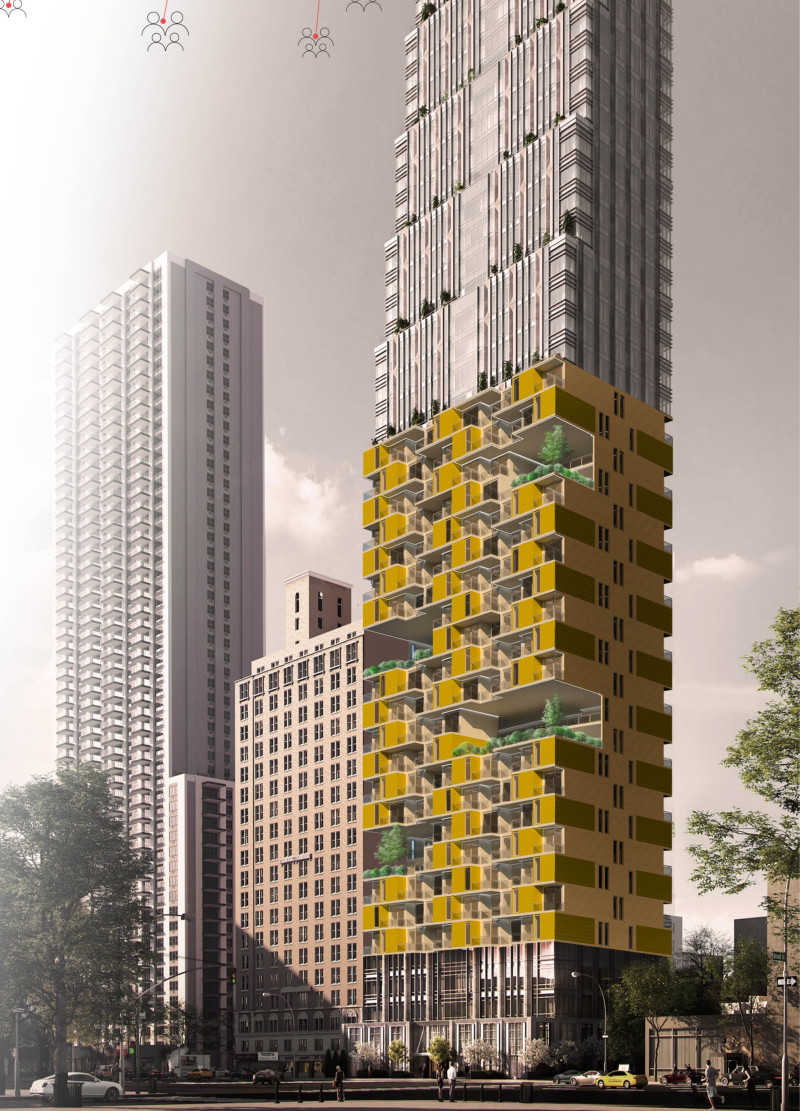5 key facts about this project
MicroPolis is an innovative response to the need for affordable housing in New York City, particularly highlighted by issues that arose during the Covid-19 pandemic. Located in urban areas with many unoccupied residential units, the design focuses on creating microhomes that fit within existing structures. The goal is to merge functionality with community, providing a solution that addresses housing shortages while promoting resilience among diverse populations.
Design Concept
The design centers on converting vacant spaces in luxury buildings into affordable housing options. It takes advantage of prefabricated construction methods, allowing for quick assembly and efficient use of resources. By focusing on energy efficiency and cost-effectiveness, MicroPolis aims to create homes that meet the immediate needs of the community without compromising on quality or sustainability.
Architectural Composition
Units are arranged in a staggered manner to enhance the visual appeal of the buildings. Each microhome features balconies that serve as private outdoor spaces for residents. This layout not only encourages a sense of ownership but also provides opportunities for comfort and relaxation. In addition to individual spaces, the design includes large public outdoor areas meant for social activities, recreation, and communal workspaces. This emphasis on shared facilities fosters a stronger community spirit.
Location Strategy
The positioning of MicroPolis units in affluent neighborhoods is a strategic choice to improve living conditions for essential workers. It allows residents to have better access to schools, healthcare, and local services. By reducing commuting distances, the design aims to minimize the environmental impact while enhancing the overall quality of life for families.
Attention to detail is crucial in this project. The layout and design aim to create environments that encourage interaction among residents. Shared outdoor spaces are designed to promote engagement and connection, enhancing not just individual living experiences but also the broader community atmosphere. Through thoughtful planning and design, MicroPolis seeks to redefine urban living in a way that is inclusive and sustainable.




















































